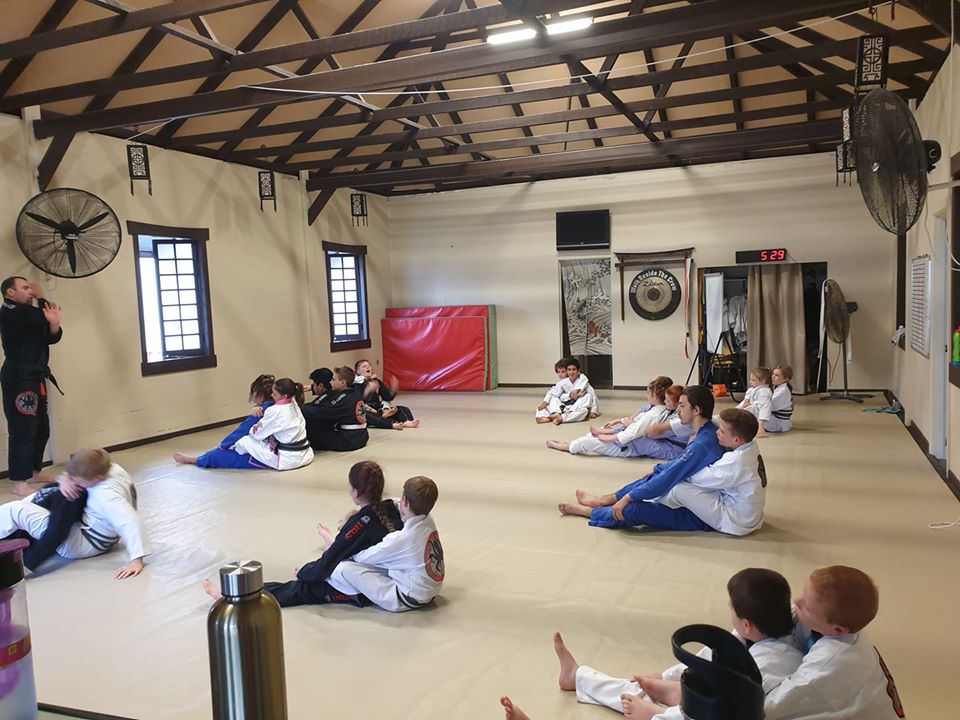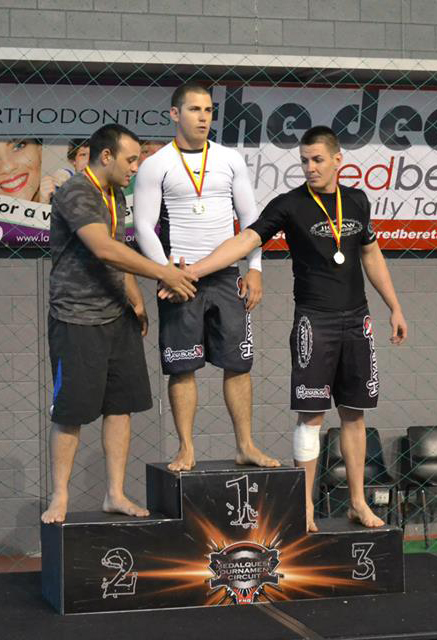|
You will need to bring;
NoGi; A rashy (strong shirt) shorts and water Gi Bjj; Kimono/ Gi (uniform) and maybe water Call or email to book in your free private introductory class Ben 0438 001 525 |
The Jigsaw Brazilian Jiu Jitsu team work hard.
-We work hard to be the best competitors we can be, -We work hard to be the best teachers we can be, -We work hard to be best Individuals we can be, and we work hard to be the best team we can be. The history of Jiu Jitsu Most commonly, “jiu-jitsu” is translated as “the gentle art”. Although India is frequently referred to as the birthplace of ancient jiu-jitsu, it is difficult to pin down its exact origins. In fact, Brazilian Jiu-Jitsu has its roots in the Japanese jiu-jitsu of the early 20th century, and in Jigoro Kano’s massive renovation of the art during the latter part of the 19th century. Kano’s innovations in training techniques - including the addition of safe and controlled sparring in a grappling context, called “randori” - led to great advances in the martial arts, and would contribute to the development of Jiu-Jitsu in Brazil. “Gentle art” conveys the central idea behind both classical Japanese and modern Brazilian Jiu-Jitsu - the idea of using strength in the most efficient way possible. Rather than resisting force with force, the practitioner uses efficient technique in an intelligent fashion to overcome raw strength and aggression. This is the philosophical core of Jiu-Jitsu; equipped with this principle, a smaller person can hope to defeat a bigger, stronger person. |
The benefits I never expected from learning Martial Arts.
I want to let you know about Martial arts/Brazilian Jiu jitsu because it has helped me in life more than any other activity.
I know that it will do the same for YOU too!
OK so there’s all the obvious stuff like;
self defence,
physical strength,
endurance,
speed.
Etc.. thats what you would expect from a Martial Art.
But the things that i got from Martial arts that i never expected were far more valuable in the long run.
Confidence directing people- something i’d never had experience with before, but at training we would routinely have to teach and direct new students and as i was only a teenager, most of the people that i would teach were older so i HAD to believe in myself and what i was showing. This was a skill that was very handy when i entered the work force!
Stress relief- When you are training it is all but impossible to think about work, bills, deadlines etc. You are totally focused on the task at hand. Your training partner will make sure of that!
Flexability- Ok this was an obvious one right? Wrong! I learnt that in Jiu Jitsu/martial arts and in life you cannot be in control of everything. You cannot force things to fit you! You have to be able to adapt to change to suit the forces that are at play ‘in the moment’. Sometimes they are going to be crushing you, sometimes they will be so flighty and elusive that you cant grasp them for long enough to make your skills effective. By making myself adaptable, I don’t get as cornered when a problem presents itself.
This is true in life and in training.
You will learn patience, humility, respect, loyalty and self control. YOU will meet other remarkable people from all different walks of life that you would not normally meet.
But the thing which was of the most value to me was that i realized how much......
well i guess you’ll just have to come along to a class and find out! ; )
Ben Atkinson

